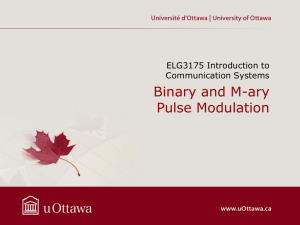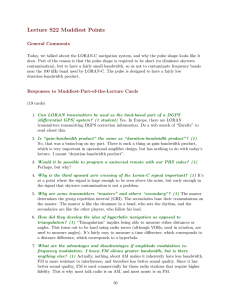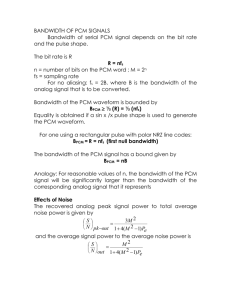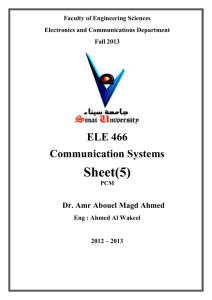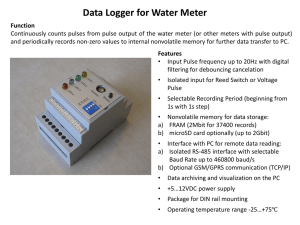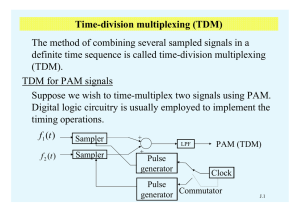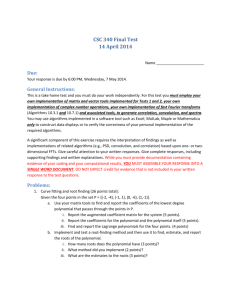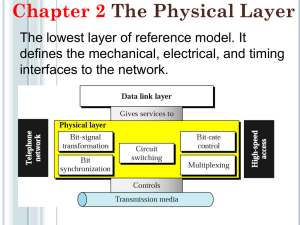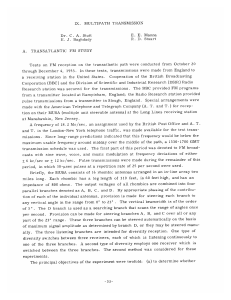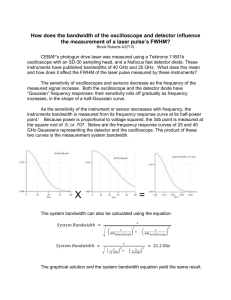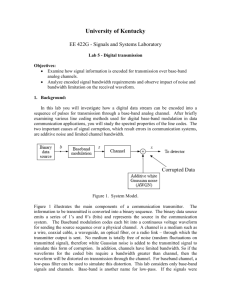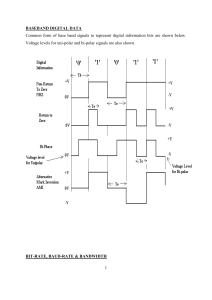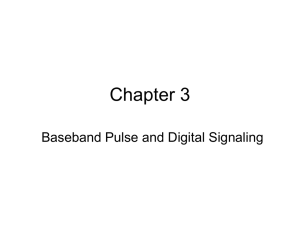problem set 1: pam and pcm
advertisement
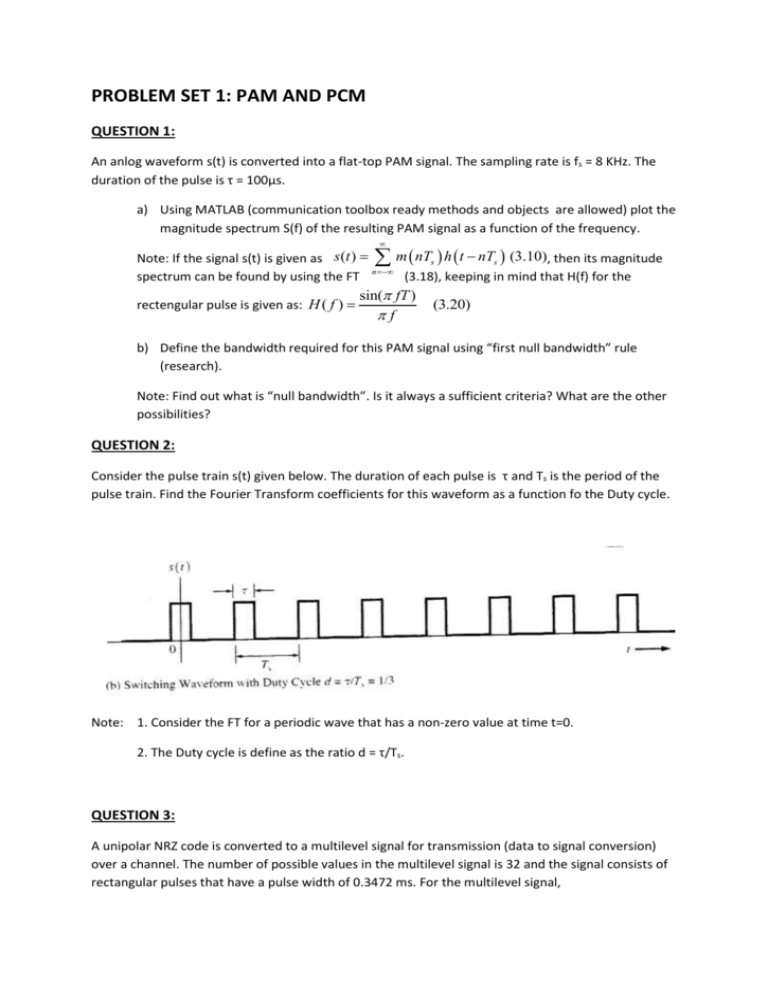
PROBLEM SET 1: PAM AND PCM QUESTION 1: An anlog waveform s(t) is converted into a flat-top PAM signal. The sampling rate is fs = 8 KHz. The duration of the pulse is τ = 100µs. a) Using MATLAB (communication toolbox ready methods and objects are allowed) plot the magnitude spectrum S(f) of the resulting PAM signal as a function of the frequency. m nTs h t nTs (3.10), then its magnitude Note: If the signal s(t) is given as s (t ) n spectrum can be found by using the FT (3.18), keeping in mind that H(f) for the rectengular pulse is given as: H ( f ) sin( fT ) f (3.20) b) Define the bandwidth required for this PAM signal using “first null bandwidth” rule (research). Note: Find out what is “null bandwidth”. Is it always a sufficient criteria? What are the other possibilities? QUESTION 2: Consider the pulse train s(t) given below. The duration of each pulse is τ and Ts is the period of the pulse train. Find the Fourier Transform coefficients for this waveform as a function fo the Duty cycle. Note: 1. Consider the FT for a periodic wave that has a non-zero value at time t=0. 2. The Duty cycle is define as the ratio d = τ/Ts. QUESTION 3: A unipolar NRZ code is converted to a multilevel signal for transmission (data to signal conversion) over a channel. The number of possible values in the multilevel signal is 32 and the signal consists of rectangular pulses that have a pulse width of 0.3472 ms. For the multilevel signal, a) What is the baud rate? (Note: How is baud rate defined? There is difference between baud rate and bit rate. Check Data Communications notes.) b) What is the bit rate? c) What is the null bandwidth? QUESTION 4: In a communication quality audio system, an analog signal with frequency 3200 Hz is converted into a PCM signal by sampling at 7000 samples/s and by using an uniform quantizer with 64 steps. The PCM binary data are transmitted over a noisy channel to a receiver that has a bit error rate (BER) of 10-4. a) What is the null bandwidth of the PCM signal if a polar line code is used? b) What is the average SNR of the recovered analog signal at the recieving end? QUESTION 5: Bandwidth of RS-232 signals. The RS-232 serial port on a personal computer is transmitting data at a rate of 38400 bits/s using NRZ line code. Assume that binary 1’s and 0’s are equally likely to occur. Compute and plot the power spectral density(PSD) in dB for this RS-232 signal. Note: Use a dB scale with the PSD being normalized so that 0 dB occurs at the peak of the PSD plot.

